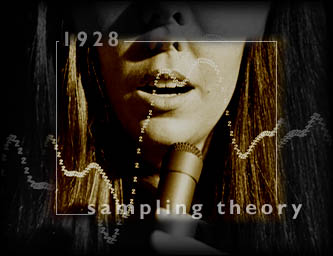
![]()
I n the late 1920s, the only technology to preserve musical recordings was to copy sound waves in wax. Harry Nyquist, an AT&T scientist, thought there was a better way. He theorized that sound waves could be "sampled" and then read back to replot the original wave - thereby perfectly reproducing the original.
Signal Sampling Theory was an exercise in frustration for Nyquist, since it needed 30,000 samples a second to make it work, and no system at that time could measure, record, store and reread that much information that quickly. He had to wait for computers, binary language, transistors and integrated circuits -- 60 years of technological progress -- to make digital recording and playback a reality. A little longer, and Nyquist might have seen the technology his theory spawned ultimately applied as artistic components in Rap and Hip Hop tunes.
AT&T scientists also created the concept of the laser, which together with Sampling Theory gave us the compact disk.